The stability of gold clusters: Every ligand counts
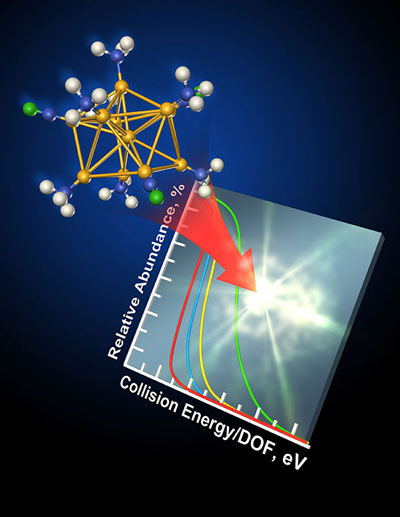 The number of molecules attached to gold clusters has a previously unrecognized influence.
The number of molecules attached to gold clusters has a previously unrecognized influence.
Jul 21st, 2014
Read more
 The number of molecules attached to gold clusters has a previously unrecognized influence.
The number of molecules attached to gold clusters has a previously unrecognized influence.
Jul 21st, 2014
Read more Mathew M. Maye, associate professor of chemistry, has been awarded a three-year, $360,000 grant from the National Science Foundation (NSF). The award supports his ongoing work with metal stainless alloy nanostructures, the results of which may impact gas storage, heterogeneous catalysis, and rechargeable lithium-ion batteries.
Mathew M. Maye, associate professor of chemistry, has been awarded a three-year, $360,000 grant from the National Science Foundation (NSF). The award supports his ongoing work with metal stainless alloy nanostructures, the results of which may impact gas storage, heterogeneous catalysis, and rechargeable lithium-ion batteries.
Jul 21st, 2014
Read moreSolution-based inorganic process could drive more efficient electronics and solar devices.
Jul 21st, 2014
Read more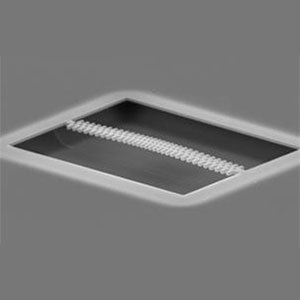 Electromagnetic radiation and mechanical vibrations of matter interact and exchange energy at the nanoscale. The experimental basis to study such interactions with precision is still being established. Researchers have now designed a silicon 1D Optomechanical crystal built up so that it allows to localize in a stable way both phonons and photons.
Electromagnetic radiation and mechanical vibrations of matter interact and exchange energy at the nanoscale. The experimental basis to study such interactions with precision is still being established. Researchers have now designed a silicon 1D Optomechanical crystal built up so that it allows to localize in a stable way both phonons and photons.
Jul 21st, 2014
Read more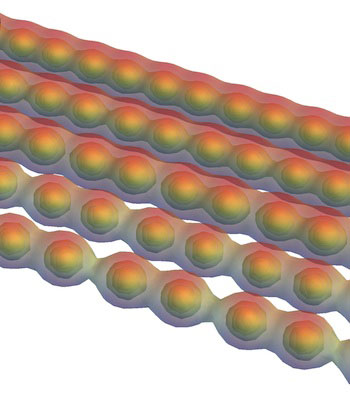 Applying just the right amount of tension to a chain of carbon atoms can turn it from a metallic conductor to an insulator, according to Rice University scientists.
Applying just the right amount of tension to a chain of carbon atoms can turn it from a metallic conductor to an insulator, according to Rice University scientists.
Jul 21st, 2014
Read more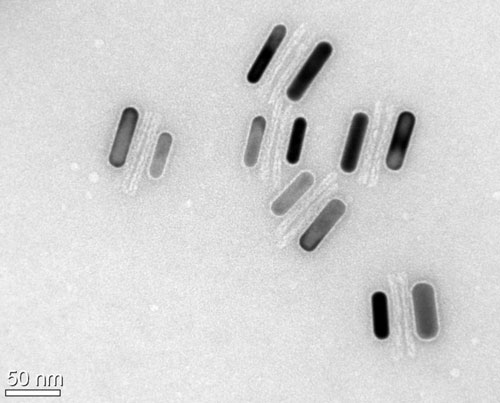 A nanostructure made from two tiny gold rods reversibly changes its optical properties when specific DNA molecules are added.
A nanostructure made from two tiny gold rods reversibly changes its optical properties when specific DNA molecules are added.
Jul 21st, 2014
Read more The structure - a layer of graphite flakes and an underlying carbon foam - is a porous, insulating material structure that floats on water. When sunlight hits the structure's surface, it creates a hotspot in the graphite, drawing water up through the material's pores, where it evaporates as steam.
The structure - a layer of graphite flakes and an underlying carbon foam - is a porous, insulating material structure that floats on water. When sunlight hits the structure's surface, it creates a hotspot in the graphite, drawing water up through the material's pores, where it evaporates as steam.
Jul 21st, 2014
Read more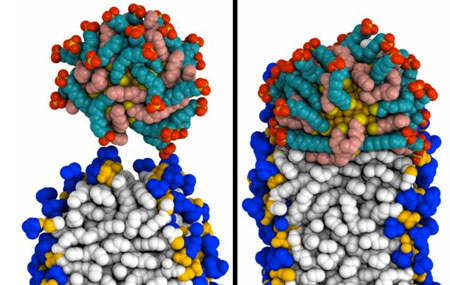 A new study from MIT materials scientists reveals that gold nanoparticles enter cells by taking advantage of a route normally used in vesicle-vesicle fusion, a crucial process that allows signal transmission between neurons. They describe in detail the mechanism by which these nanoparticles are able to fuse with a membrane.
A new study from MIT materials scientists reveals that gold nanoparticles enter cells by taking advantage of a route normally used in vesicle-vesicle fusion, a crucial process that allows signal transmission between neurons. They describe in detail the mechanism by which these nanoparticles are able to fuse with a membrane.
Jul 21st, 2014
Read more New material traps gases from nuclear fuel better and uses less energy than currently available options.
New material traps gases from nuclear fuel better and uses less energy than currently available options.
Jul 20th, 2014
Read more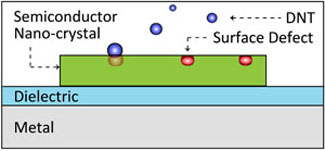 New technology under development at the University of California, Berkeley, could soon give bomb-sniffing dogs some serious competition.
New technology under development at the University of California, Berkeley, could soon give bomb-sniffing dogs some serious competition.
Jul 20th, 2014
Read moreResearchers are working to make a better battery by making the cathode of sulfur instead of today's lithium-cobalt oxide.
Jul 20th, 2014
Read more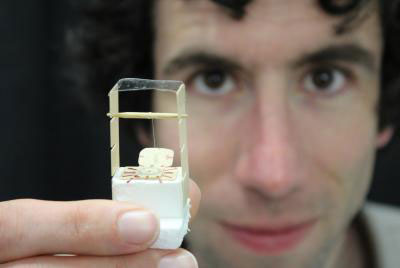 Scientists have uncovered the secret to twisting light at will. It is the latest step in the development of photonics, the faster, more compact and less carbon-hungry successor to electronics.
Scientists have uncovered the secret to twisting light at will. It is the latest step in the development of photonics, the faster, more compact and less carbon-hungry successor to electronics.
Jul 18th, 2014
Read more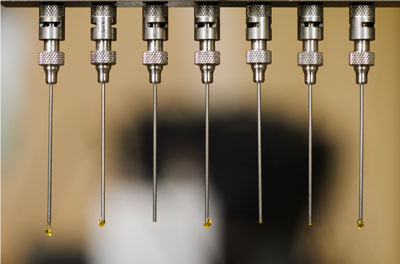 The U.S. Department of Energy selected a University of Alabama start-up company for an approximate $1.5 million award to refine an alternative material to potentially extract uranium from the ocean.
The U.S. Department of Energy selected a University of Alabama start-up company for an approximate $1.5 million award to refine an alternative material to potentially extract uranium from the ocean.
Jul 18th, 2014
Read more Over a 150 years since it was first described by Darwin, scientists are finally uncovering the secrets behind the super strength of barnacle glue.
Over a 150 years since it was first described by Darwin, scientists are finally uncovering the secrets behind the super strength of barnacle glue.
Jul 18th, 2014
Read more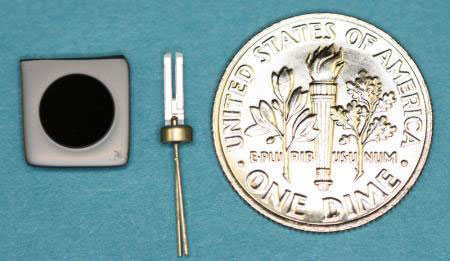 Nearly all electronics require devices called oscillators that create precise frequencies - frequencies used to keep time in wristwatches or to transmit reliable signals to radios. For nearly a century, these oscillators have relied upon quartz crystals to provide a frequency reference, much like a tuning fork is used as a reference to tune a piano. A new approach could ultimately replace the quartz crystal frequency reference - technology in use since the 1920s.
Nearly all electronics require devices called oscillators that create precise frequencies - frequencies used to keep time in wristwatches or to transmit reliable signals to radios. For nearly a century, these oscillators have relied upon quartz crystals to provide a frequency reference, much like a tuning fork is used as a reference to tune a piano. A new approach could ultimately replace the quartz crystal frequency reference - technology in use since the 1920s.
Jul 17th, 2014
Read more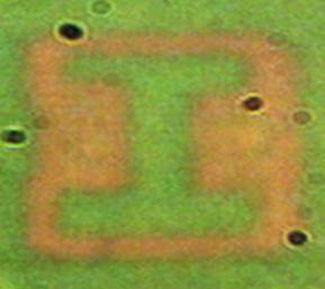 Researchers have demonstrated that an array of novel gold, pillar-bowtie nanoantennas can be used like traditional photographic film to record light for distances that are much smaller than the wavelength of light. A standard optical microscope acts as a 'nanocamera' whereas the pillar-bowtie nanoantennas are the analogous film.
Researchers have demonstrated that an array of novel gold, pillar-bowtie nanoantennas can be used like traditional photographic film to record light for distances that are much smaller than the wavelength of light. A standard optical microscope acts as a 'nanocamera' whereas the pillar-bowtie nanoantennas are the analogous film.
Jul 17th, 2014
Read more